Big Ears Festival is a bubble – a cloistered series of moments dedicated to creation and exploration. It’s wondrous and strange and comforting. And it’s a privilege to experience these sounds for a few days. It’s the most inclusive festival I’ve ever been to, with a wide spectrum of genres and audience demographics being represented. From the moment you roll onto Gay Street, there is a sense of weightlessness, of lightening. The outside world exists slightly out of focus, there but confined to its own devices and demands. And you might even run into some unexpected guests while you’re at your hotel or wandering the streets (I’m looking at you Thurston Moore, Rhiannon Giddens, Henry Threadgill, and Charles Lloyd).
Over the last few years, I’ve witnessed miracles of musical genesis: hip-hop revelations, R&B oscillations, experimental noises, and all manner of rock reconstructions. And yet, regardless of their individual proclivities, the artists of Big Ears feel connected, bound by something that can’t be easily labeled or categorized. This year, there was heavy presence of Nonesuch artists, past and present, as the festival was helping to celebrate the label’s 60th anniversary.
I arrived on Thursday to sun and a feeling of great expectation.
And so Big Ears begins.
Thursday, March 21
Mary Halvorson: Amaryllis at the Tennessee Theatre
Mary Halvorson has long since perfected a certain musical alchemy, a blending of various jazz, folk, and experimental architectures. For her Big Ears performance, she gathered together a group of likeminded musicians as adept at reshaping these forms as she has been: vibraphonist Patricia Brennan, bassist Nick Dunston, drummer Tomas Fujiwara, trumpeter Adam O’Farrill, and trombonist Jacob Garchik. Under the Amaryllis moniker, they run through old songs, new songs, and songs that have yet to see the light of day in a live environment. Opening with a couplet from Cloudward, released earlier this year on Nonesuch, the musicians seemed supernaturally in tune with one another, following each other down whatever musical rabbit holes seemed appropriate and necessary at the time. From a bit of noisy jazz chaos to an exploration of more muscular rock structures, Halvorson led the band through a whirlwind of genres and approaches, finding a sublime realization of the sounds echoing in her head. It was joyous and labyrinthine and welcoming all at once, a perfect opening salvo for my time at Big Ears this year.
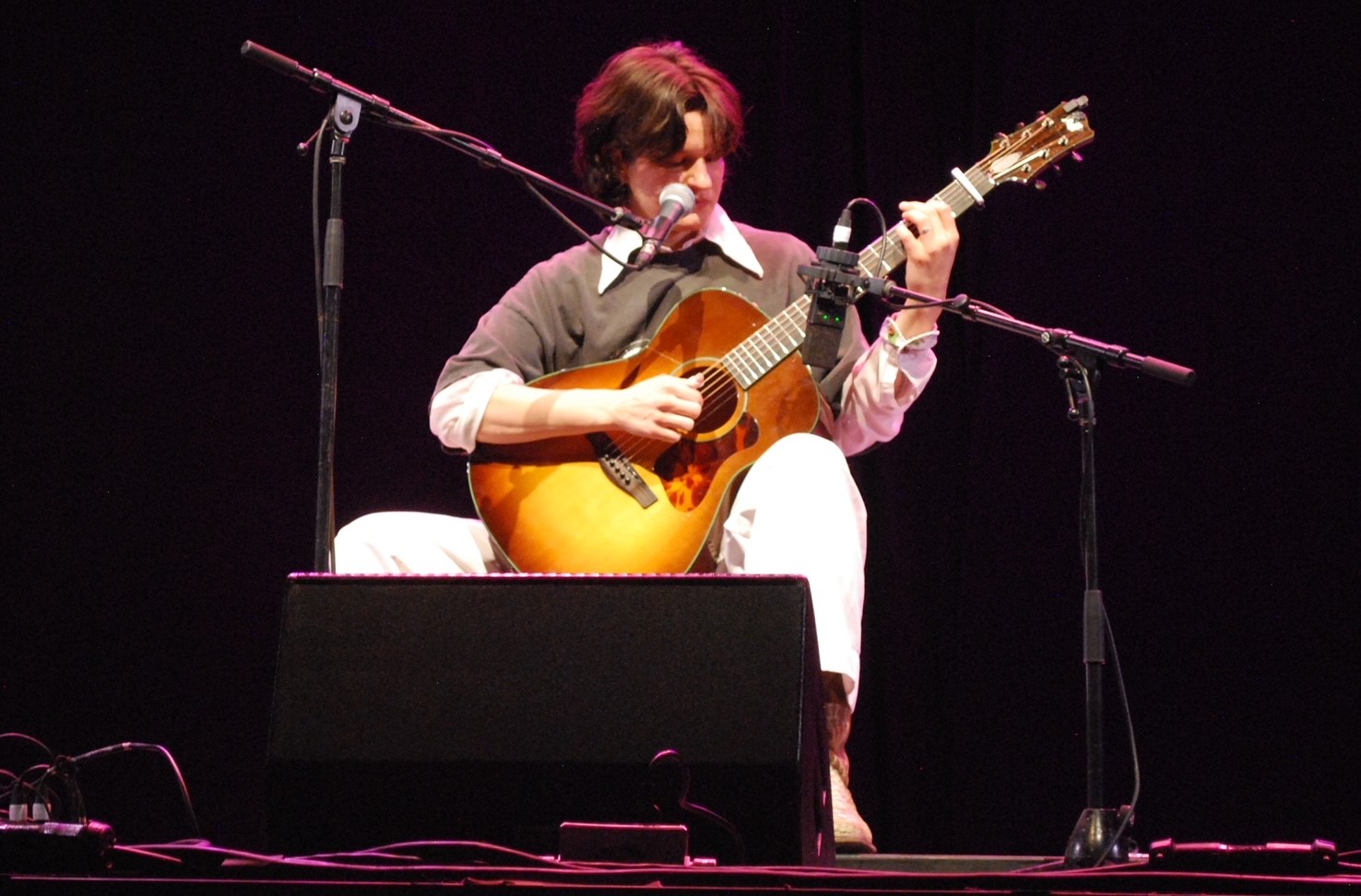
Adrianne Lenker at the Knoxville Civic Auditorium
After a walk over to the Knoxville Civic Auditorium, surrounded by people discussing Big Thief album preferences and Adrianne Lenker solo singles, I made my way inside and made predictions in my head about the show’s setup. I was not surprised to see a single chair onstage – this would be a quiet and revelatory offering. She made her way to the stage, very quiet, tuning her guitar and fiddling with the mic stand. She slowly began to pluck the strings, and a devastating wave rolled over everyone. Her voice was fragile, enormous, and filled with eons of experience. Her guitar was new – a story she related when she received it while under a solar eclipse – and it was the perfect conduit for her words and the stories and histories she examined and dissected. Her hands moved to odd chord structures and tunings, her voice lifting each note beyond its own limitations. Spanning a handful of albums – including her latest, Bright Future — and a few Big Thief covers (notably “Cactus Practice”, “The Only Place”, and “Vampire Empire”), the show was a masterwork in minimalist emotional ruin. The music fell across you, fragile and determined, until the last few notes shivered and passed from her guitar.
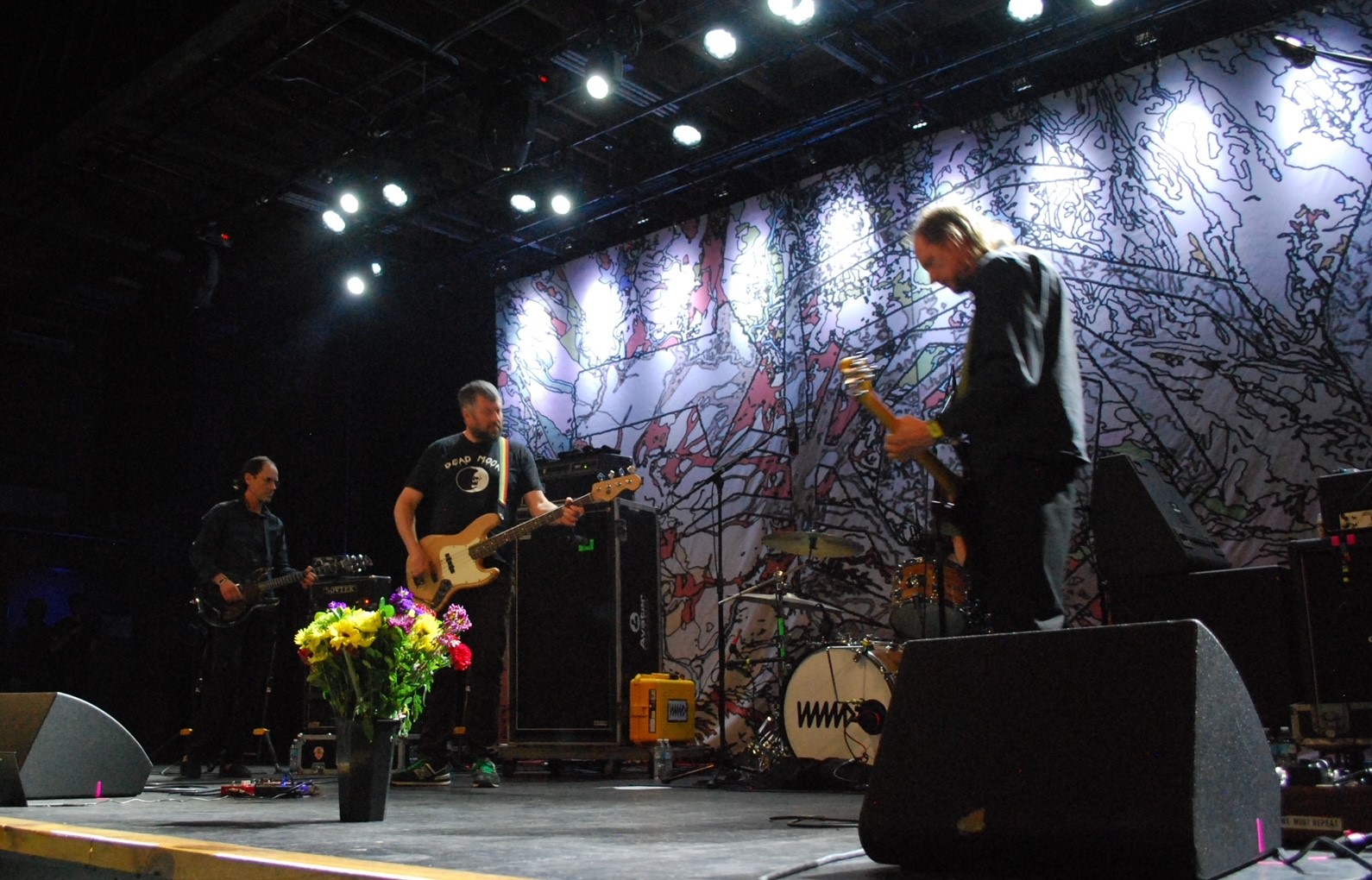
Unwound at the Mill and Mine
I began the walk to Mill & Mine for something quite a bit different, something a bit more monstrous. And Unwound did not disappoint. They settled into a ferocious groove a few songs in and maintained that redline momentum until the end, a howling and riotous exploration of their history together. With the death of original bassist Vern Rumsey, Sarah Lund and Justin Trosper brought on bassist Jared Warren and guitarist Scott Seckington to fill out the lineup for their reunion shows. And it was this foursome that shook the timbers of the stage, revisiting songs from Fake Train, New Plastic Ideas, Challenged for a Civilized Society, Repetition, and Leaves Turn Inside You. The guitars landed with the weight of an avalanche, drums pounding dents into your skull. The audience was a lump of malleable clay, molded by the dense waves of sound emanating from the stage – we moved and staggered and recoiled with each concussive attack. It was like no time had passed. The band moved the land around them, taking us with them as they carved out a new landscape for their post-hardcore gravities. It was a marvel.
Robert Aiki Aubrey Lowe at The Standard
I left the Unwound show a bit early, owing to the nature of Big Ears – sometimes you get a wild idea that you need to catch another show, and you just go. So I walked a few minutes over to The Standard and settled in for a performance from modular synthesist and composer Robert Aiki Aubrey Lowe. Introduced by King Britt (who is shepherding the Blacktronika: Afrofuturism in Electronic Music performances at Big Ears this year), Lowe was formidable yet comfortable, standing behind a table with various synths laid out and connected by innumerable wires. He began to slowly twist and maneuver across these modular machines, slowly building a nocturnal turbulence that carried itself around the room. At times using his voice as a foundation for these shifting rhythms, the performance was a true collaboration between man and machine, of synthetic means and human inspiration. It was a joy to watch and a privilege to experience.
Friday, March 22

Hurray for the Riff Raff at the Mill and Mine
Alynda Segarra was a force of nature, a musical tidal wave. Their voice rose from the stage at the Mill and Mine, a conversation just waiting to be fully explored. Deftly weaving indie rock and folk and Americana into a seamless blur of creativity and spontaneous movement. She represented her discography well, drawing from multiple albums and integrating the songs into a cogent thesis on identity and boundless musical inspiration. Bodies were weaving together, heads bobbing and tilting along with every strum and beat. There was an exuberance to their performance, a sense of locomotive energy driving each song to their respective ends. It was a whirlwind and seemed to end far too quickly. The constant roar from the audience mixed with the band, creating an atmosphere of self-expression and connection – and that’s what Big Ears is all about.
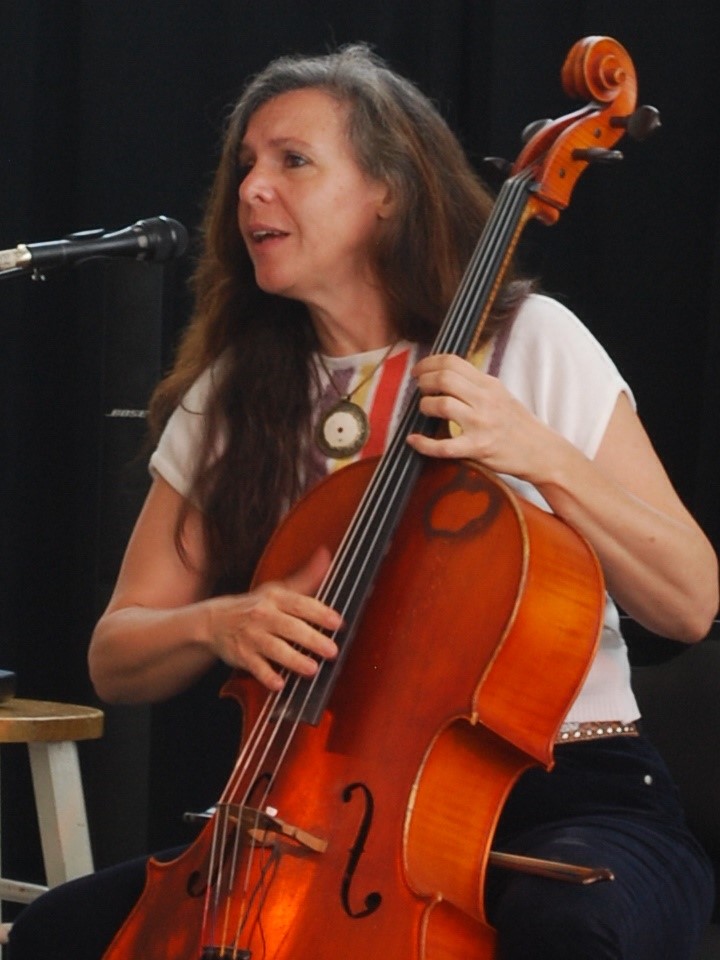
Helen Gillet at the Knoxville Museum of Art
Sometimes shows can catch you off guard, and that certainly was the case with cellist Helen Gillet’s performance at the Knoxville Museum of Art. Not one that was initially on my radar, I read some of the information in the Big Ears festival booklet and thought I’d check it out. Accompanied solely by her cello, she dove into a history of music spanning centuries: one was a self-described “funky jam about the black plague…in French” while another was a mesmerizing cover of PJ Harvey’s “Angelene”. Her fingers danced across that neck, strings shivering and thrumming under her direction. Looking around, people seemed to be in a trance, heads moving in time to each pluck and strum and the occasional bit of glorious cacophony when she seems to attack her instrument. These are the kind of shows you live for in this festival context – something you weren’t expecting but that will stay with you long after you’ve returned to the dim routine of reality.
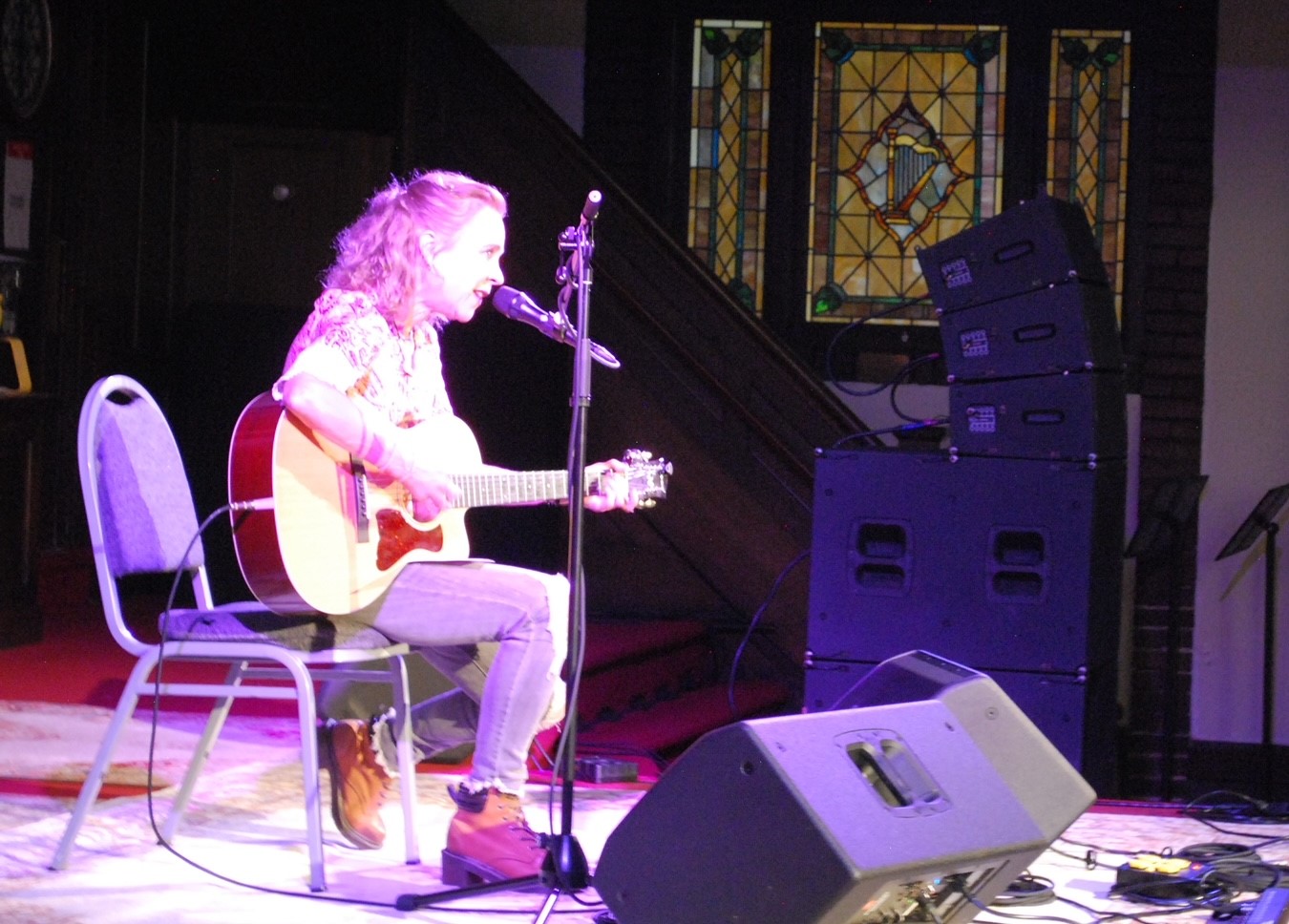
Kristin Hersch at The Point
Kristin Hersh’s show was at The Point, a small church in the northern-most area of the festival area, and it was devastating – calm and inviting and beautiful but devastating. Drawing a good bit from Hips and Makers, she also brought songs from Crooked as well as a few tracks from Throwing Muses (“City of the Dead” and “Sunray Venus”). There was a quiet intensity to her performance, a minimal presentation that belied the underlying emotional turmoil. Her guitar sang, wistful notes floating among the pews, more deliberate strums breaking the reverent silence. She closed out her set with a gorgeous cover of “Poor Wayfaring Stranger”, and its trembling echoes felt both cautionary and hopeful. We went sent out with that song still roaming through our hearts.
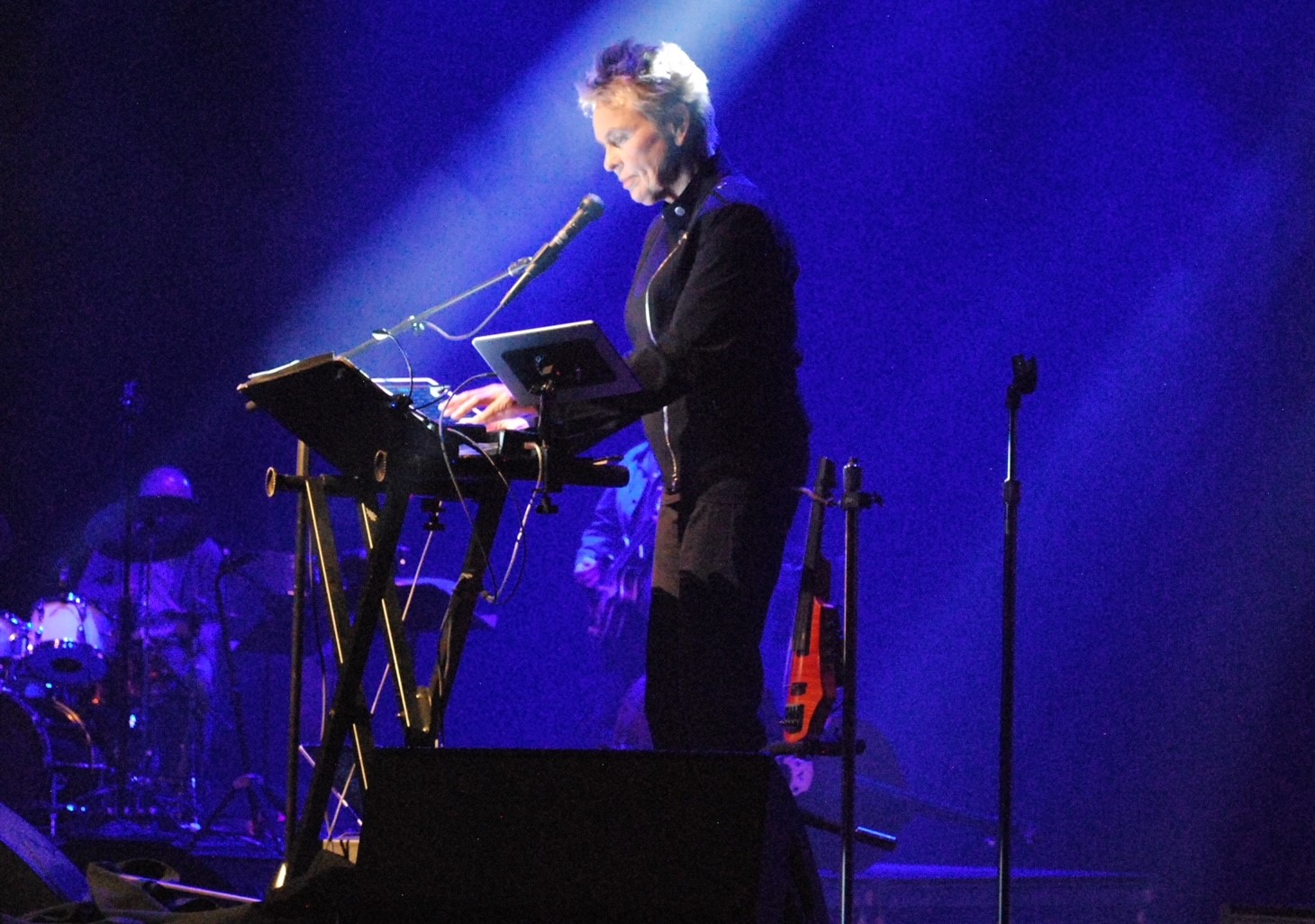
Laurie Anderson with Sexmob at the Knoxville Civic Auditorium
Friday night came to a close with Laurie Anderson, backed by New York jazz band Sexmob, at the Knoxville Civic Auditorium. As a fan of Anderson for many years, her performance was a bucket list show this year. She possesses a unique creativity, one that doesn’t conform to or resemble anything you’ve ever experienced. She is a singular talent and a vanguard for all things wild and weird and confounding. She is officially on her Let X=X tour and so the first three songs were taken from Big Science: “From the Air”, “Let X=X/It Tango”, and “O Superman”. One of the most transformative moments was when she performed “Junior Dad” (taken from the Lou Reed / Metallica album Lulu) and used it to form the basis of a tribute to her friend and partner of so many years.
She has the capacity to fully let go of preconception and just create, even if it’s unsuccessful or not what she originally intended. After telling a story about Yoko Ono’s reaction to the 2016 Presidential election, she asked that we scream for 10 seconds, a scream born of all emotions and experiences within everyone present, and it shook the walls. That kind of egoless desire to conjure something from thin air is practically extinct, a holdover from an earlier generation when the act itself meant something. After a truly remarkable show, Anderson led us in a few minutes of Tai Chi. I’ll remember everything.
Saturday, March 23
The Elephant 6 Recording Co. documentary at Regal Riviera Cinema 2
Directed by C.B. Stockfleth, The Elephant 6 Recording Co. documentary traces the origins of a group of musicians from Ruston, Louisiana whose music would come to define psych and experimental pop in the 90s. As a longtime fan of dozens of the bands housed within this collective, I was fascinated by the film’s ability to shrink their musical universe down to individual moments of clarity and insight. Losing yourself in the world of E6 is easy to do and is a rabbit hole that never seems to end. The film offers real understanding of how and why these people came together and why their music continues to influence generations of artists. It was goofy at times, but reverent when necessary and allowed you to see the gargantuan imagination that fueled the collective’s desire to create.
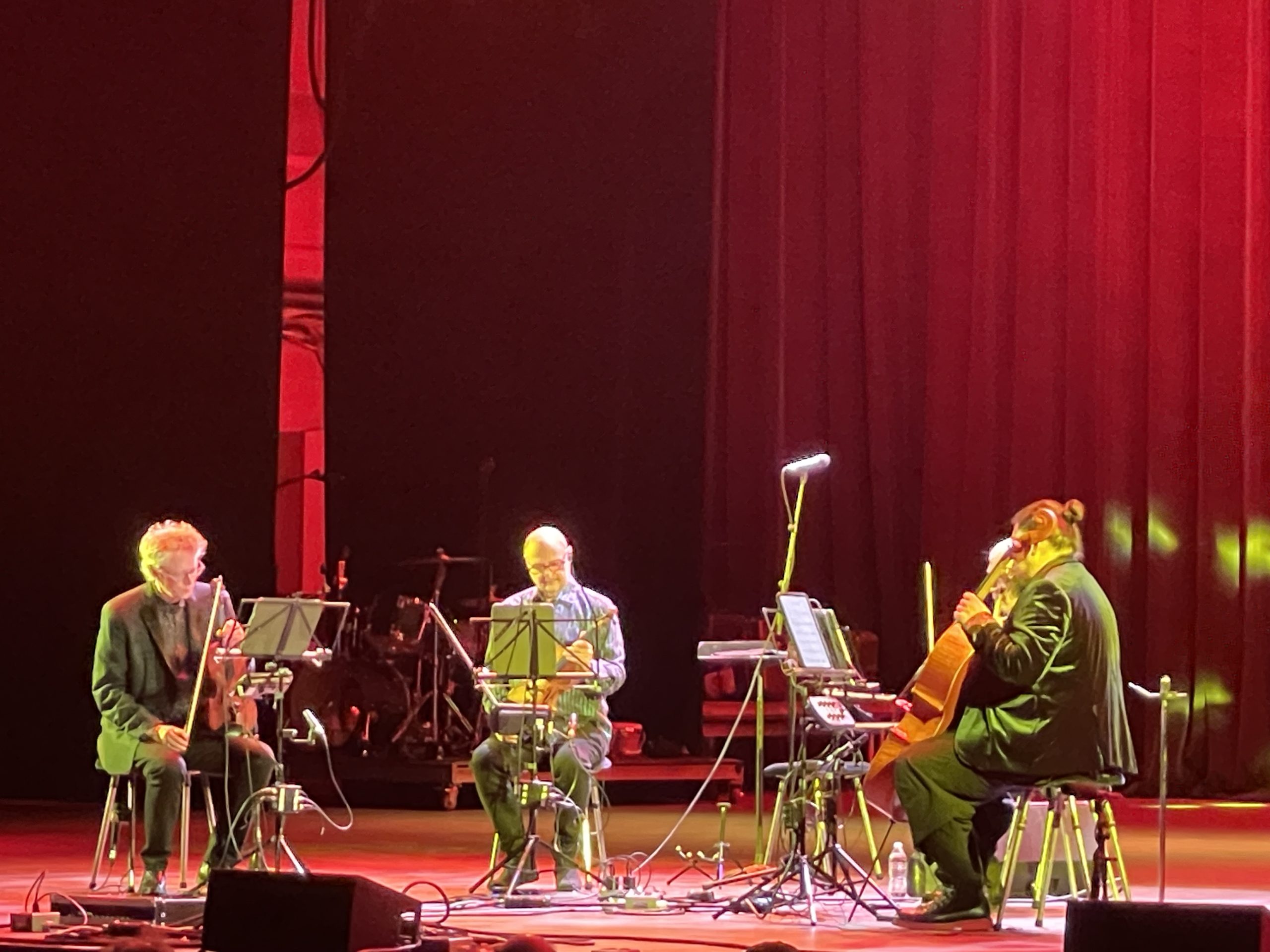
Kronos Quartet at the Knoxville Civic Auditorium
With the eminent retirement of two current Kronos Quartet members, I knew I wanted to catch this show. From Phillip Glass and Jimi Hendrix (“Purple Haze”) to the instantly recognizable “Lux Aeterna” from the Requiem for a Dream Soundtrack, the group was in perfect sync. The performance was marked by bouts of experimental construction and waves upon waves of classical adaptation. It was a joy to watch them connect, each member playing off the others in a spiral of unbridled creativity. For the last two songs, they brought out Canadian Inuk throat singer Tanya Tagaq, and her guttural howls and grunts played off their music in kaleidoscopic ways. They performed her song “Colonizer”, and it was a vicious and aggressive attack on powerful governments and social inequity. An often-incendiary offering, I was constantly staggered by how well they could read other mid-song and the casual perfection they exuded through these twisting, labyrinthine compositions.
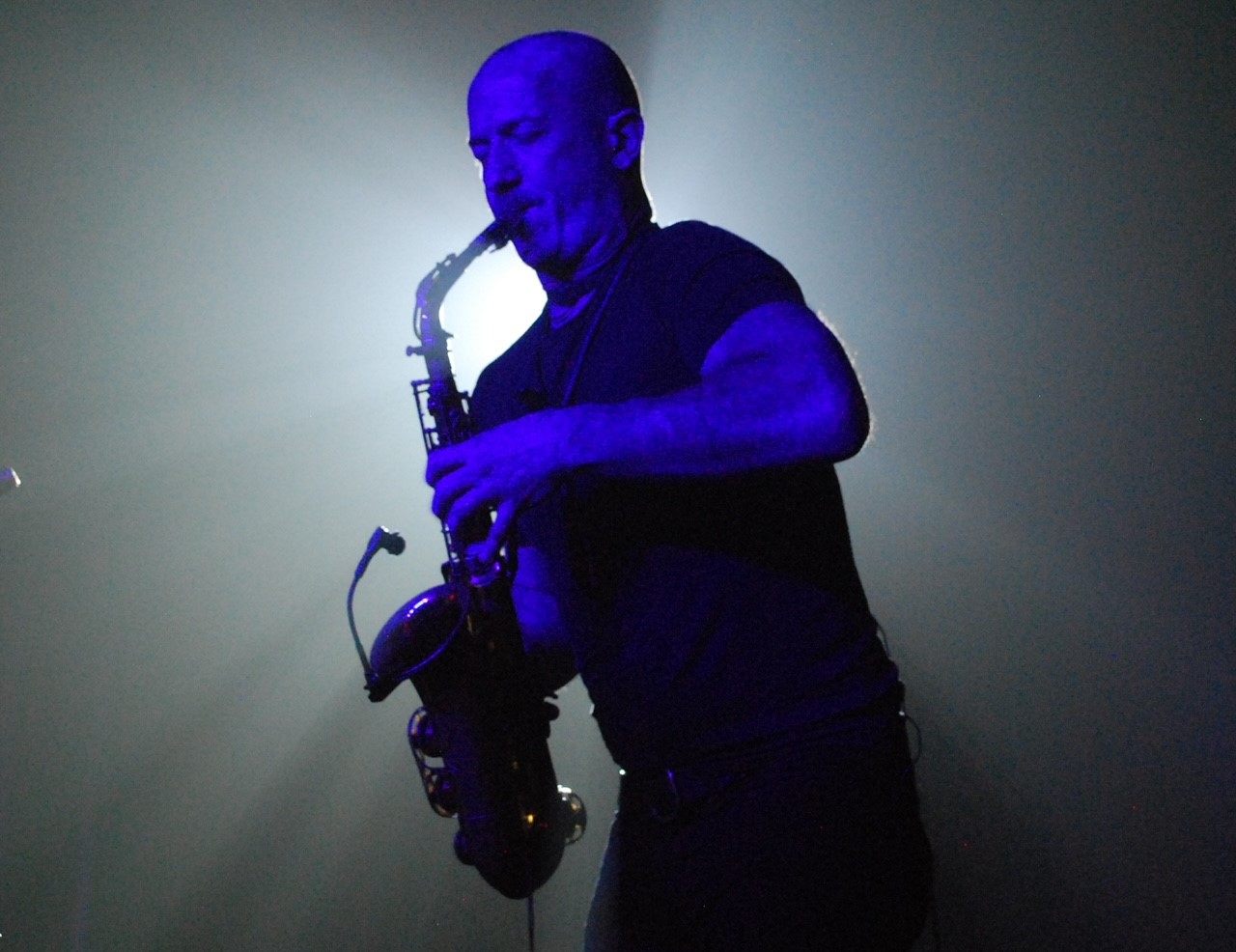
Colin Stetson at The Standard
Colin Stetson’s 2023 album, When We Were That What Wept for the Sea, was a monument to the sudden passing of his father, and a particular favorite of mine – though I have been a fan of his for many years. I was excited to see him in a relatively small venue, and I was treated to an experience unlike any other. Swapping between instruments of various sizes, he offered a physical and visceral experience, as he heaved and channeled various folkloric spirits in his pursuit of something born from the consummation of body and sound. It was night music. It was ritualistic. It was imprinted on the hearts of everyone present. It was less a show where you might pick out your favorite songs and more where you simply allow the noise to wash over you, compelling your muscles and ligaments to react in unpredictable ways. I can’t exactly describe what it felt like to be there, but it was of that specific moment and of that time of night, a dizzying whirlwind of bleats and honks and other musical manifestations born from unbridled inspiration.
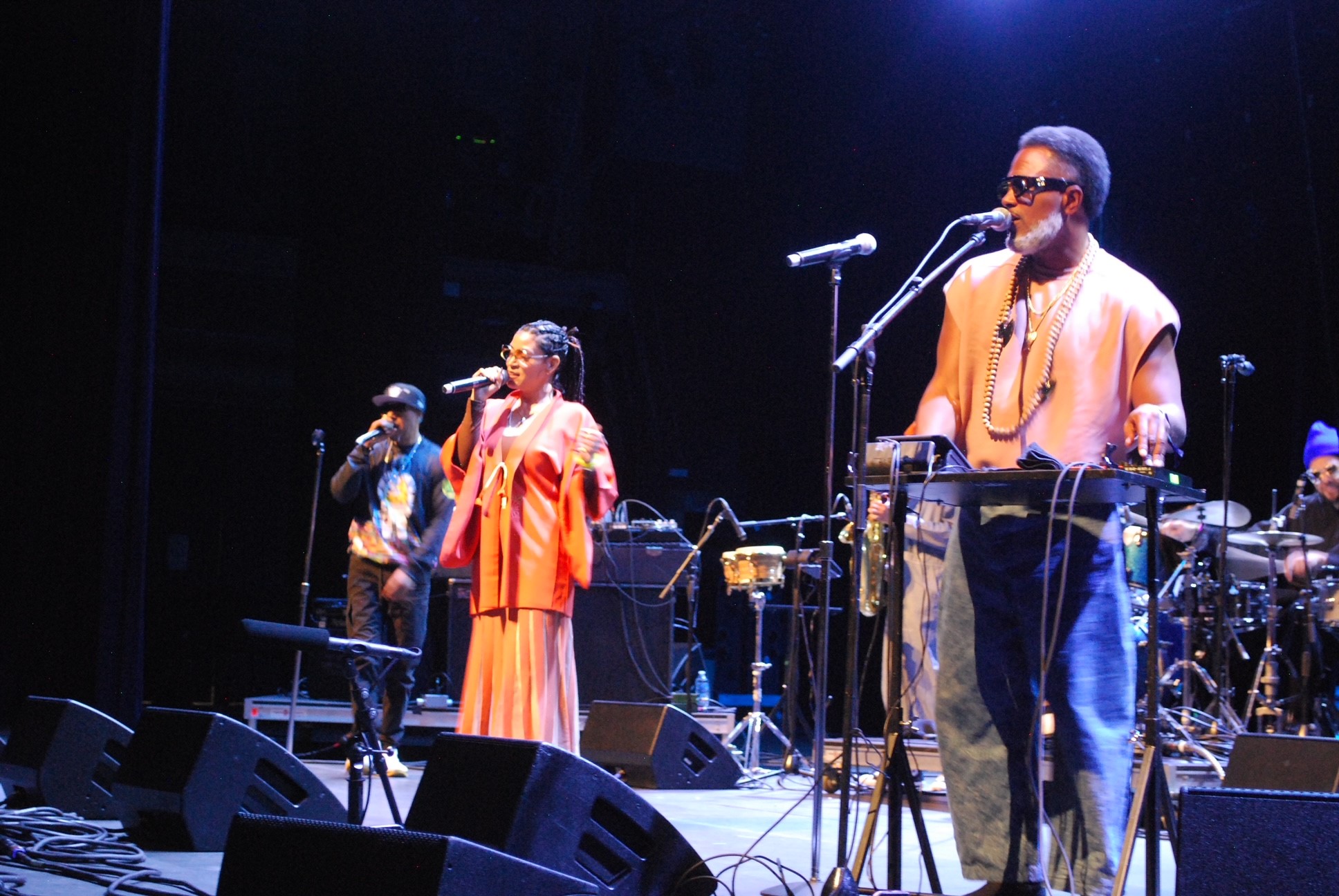
Digable Planets at the Knoxville Civic Auditorium
Hip-hop icons Digable Planets were nothing short of miraculous in their set, a towering testament to the genre and to their contributions to it. Moving around the stage like it was 1993 again, Ishmael “Butterfly” Butler, Mariana “Ladybug Mecca” Vieira, and Craig “Doodlebug” Irving were magnetic and imbued each song with a cosmic funk, a sense of history and relevance. There’s a certain wonder to seeing musicians having fun onstage, to witness waves of positivity radiate outward into the audience. And that’s exactly what happened during their set. Drawing mostly from their debut, Reachin’ (A New Refutation of Time and Space), while also tossing in a few from Blowout Comb, the band fell into a sort of synchronized dance, with each person deftly weaving themselves into the narratives of the others, rivers of words complimenting one another. It was the kind of show that just makes the day seem that much better and leaves a smile on your face, grinning from ear to ear with the knowledge that you were part of something special.
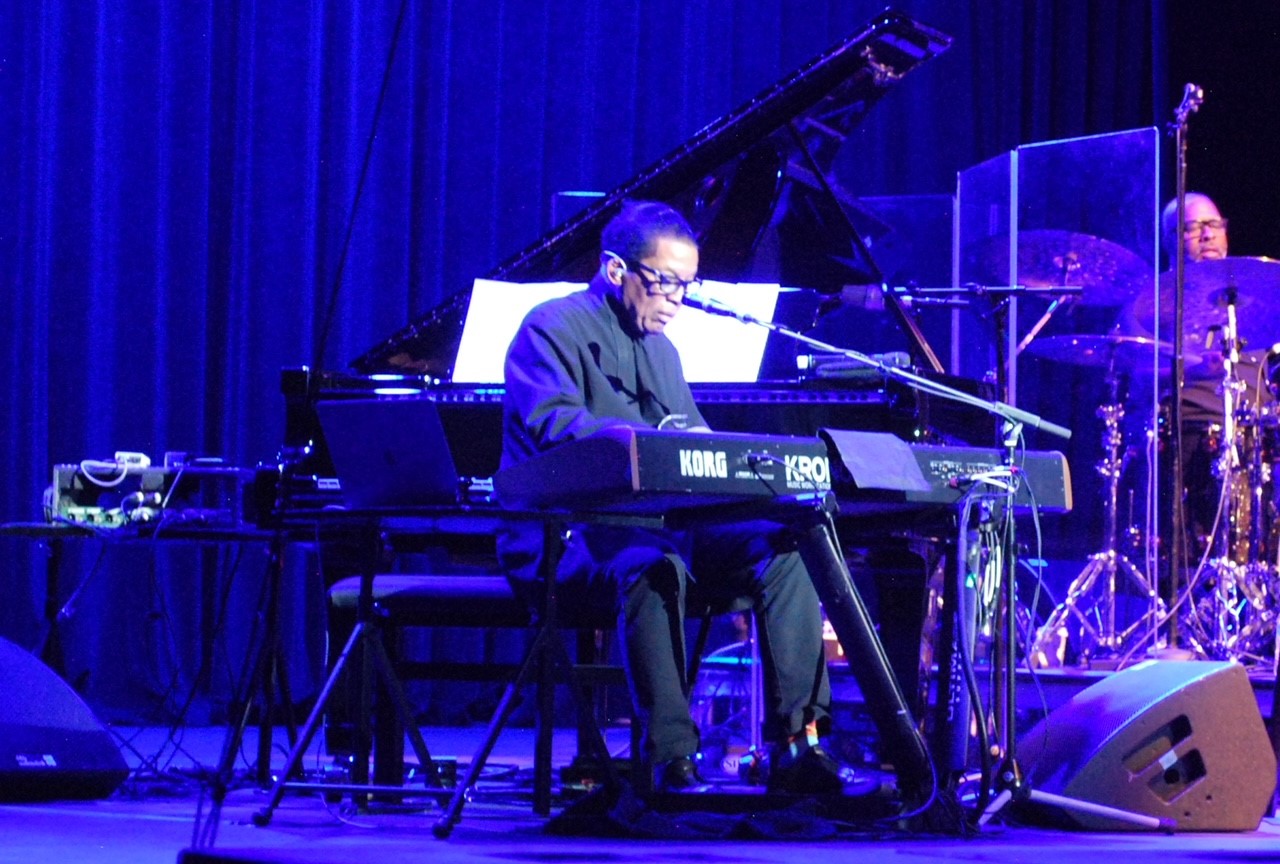
Herbie Hancock at the Knoxville Civic Auditorium
If ever there was graciousness personified, it would have to be Herbie Hancock. From the moment he took the stage, he was heaping praise upon his bandmates, which included Terence Blanchard, Devin Daniels, James Genus, Trevor Lawrence Jr., and Lionel Loueke. Every moment was perfectly orchestrated – nothing fell to pieces (unless it was mean to). Jazz became more than just a genre; it was a whole worldview, amplified under those bright lights and the echoes of the Knoxville Civic Auditorium. Hancock has always excelled at merging various elements of jazz canon, from more minimalist architecture to a more funk-laden turbulence, and it was all on display. Bits of stillness gave way to tremendous noise which fell away revealing the sound of piano wandering around in the distance. And then it would all come back together in perfect congruence, the sound of artists wasting nothing and creating a grand theatricality. It felt magical, and I’m sure I looked stupid on more than one occasion as my jaw dropped to the floor. There was life here, an insistence on the thrum of the world that existed only in that auditorium. And we were witness to its wonder.
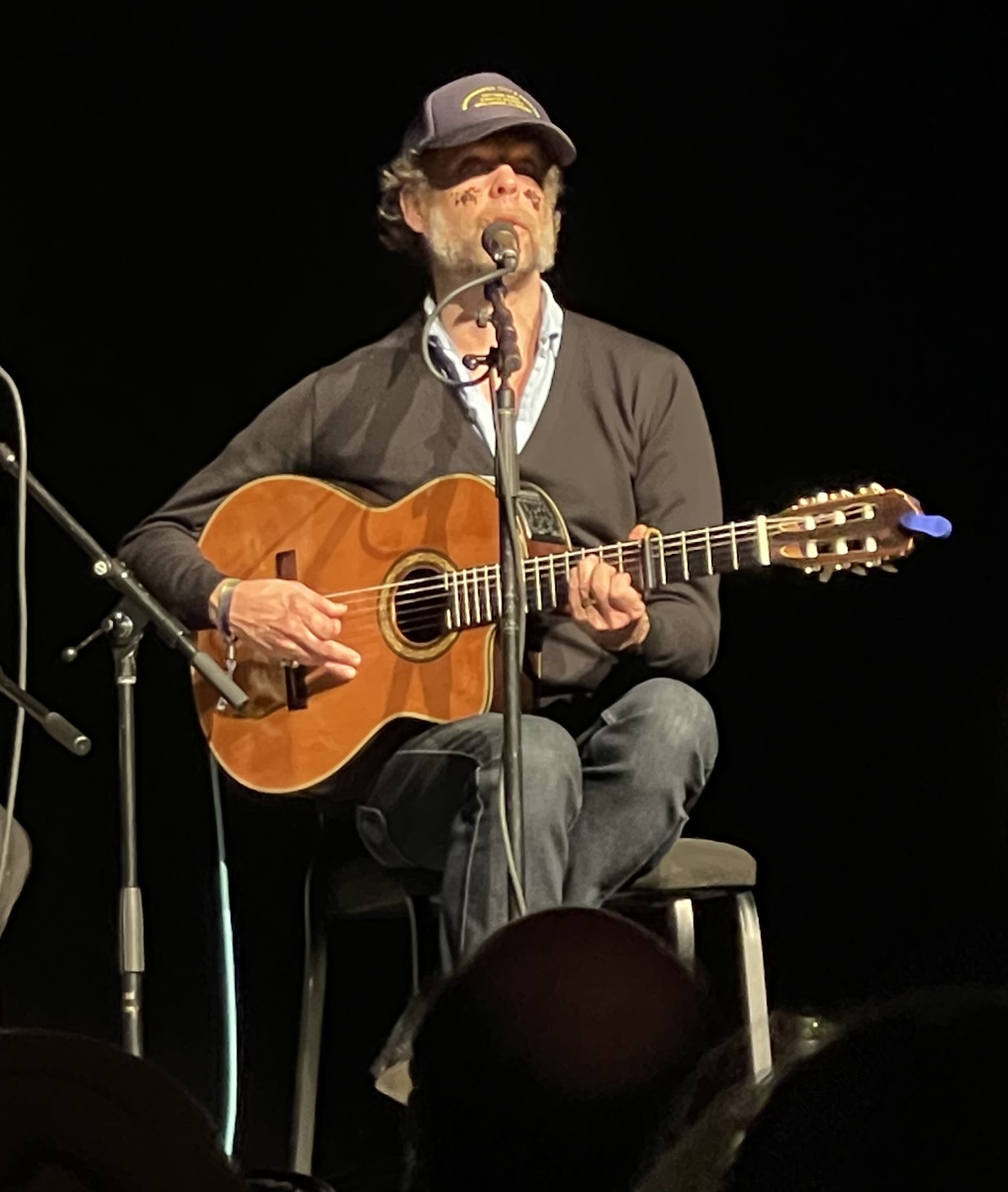
Bonnie Prince Billy at the Tennessee Theatre
It had been many years since I had last seen Will Oldham in concert – that being a ”secret” show in Chattanooga under the name of The Babblers that included Angel Olsen in the band (as I recall, they were all wearing full-body pajamas). For his Big Ears performance, he was initially joined by musician Thomas Deakin, who provided backup on guitar, trumpet, and clarinet. They wound their way through older songs, such as “New Partner” from Palace’s 1995 album, Viva Last Blues, and the beautifully elegiac “I See a Darkness” from the album of the same name. He has such a dry wit, and he was bantering with the audience all evening. His cover of Phil Oakes’ “My Kingdom for a Car” was a highlight as were the songs taken from his latest album, Keeping Secrets Will Destroy You: “Like It or Not”, “Bananas”, “Blood of the Wine”, and Crazy Blue Bells”. Oldham always fosters a communal atmosphere at his shows, and that was especially evident when he invited Joan Shelley, Nathan Salsburg, and Sara Callaway onto the stage for a few songs. He invited us to join in on a silly short song toward the end, allowing us to learn the simple lyrics and cast our voices back toward the stage. It was a beautiful and connected moment, a joining of sorts, voices raised and hearts close together.
Sunday, March 24
Silkroad Ensemble with Rhiannon Giddens at the Mill and Mine
Having missed Rhiannon Giddens solo performance on Friday – and having seen videos of her past performances with Silkroad Ensemble – I was excited to catch Sunday’s show. From the opening bellows from a large conch shell and a gorgeous vocal intonation courtesy of singer Pura Fé to the band’s breakdown of a century of musical acculturation, the stage was used as a vehicle for teaching and historical transference. The collective focused on specific elements of America’s past and terrible things we’ve done to indigenous peoples and immigrants in furtherance of a sense of manifest destiny. These songs told stories of Irish immigrants, African Americans, Asian Americans and Native Americans – of individuals who carried railroads west and saw the destruction of their homes as America moved toward the Pacific Ocean. Traditional songs were married with original concepts, silenced voices were finally given illumination. Their memories brought to life through music and an acknowledgement of what they endured. There was sadness, revelation, and hope in these songs, and maybe some of us could understand the burden they carried and the devastation they experienced.

Andre 3000 at The Point
It’s a misnomer to call Andre 3000’s 2023 record, New Blue Sun, a “flute” album – that’s an act of unnecessary reduction and doesn’t allow for the wholesale experimentation achieve in its warped and fluctuating tones. And I was curious how those sounds would be relayed in a live setting. Would he take a more minimalist approach or simply alter the songs’ innate alchemy? It didn’t take long before I was caught up in the mystery and magic of the performance. Backed by keyboards, drums, guitar, and other forms of percussion, Andre was given complete discretion in how to shape these songs, allowing them to bloom and expand according to the whims of everyone onstage. He mentioned that these songs would never be performed exactly this way again – everything was spur of the moment, a spontaneous reaction to our reaction to the music. He was personable, talking about his journey from hip-hop superstar to flute obsessive and revealing the genesis of New Blue Sun. At one point, he began talking in a language I didn’t recognize, only to quickly say that he “just made that shit up” and “you should have seen your faces” before describing the process he used to develop this self-created dialect. I laughed and marveled at his creativity and ingenuity and was reminded why he was such an inspiration for so many people and other musicians.

John Paul Jones and Thurston Moore at the Mill and Mine
This was noise. A brilliant noise. Two musical icons going back and forth building up a mountain range of arrhythmic sounds and ragged atonality. It was by far the longest entry line of the festival, and with a delay of around an hour, it was a fairly frustrating experience getting inside the venue. Once everything kicked in and the lights dimmed, it was just a monumental exploration of sound in its purest form. The crowd thinned quickly once the nature of the performance began to reveal itself. Maybe they wanted a more traditional offering, but I knew that this was something special, a meeting of musical minds that spoke the same language; or possibly, who were working on creating a new rhythmic dialogue that existed for them alone. There was nothing structured about it, just elemental creation. It was loud and cacophonous and poured down like corrugated metal rain. It was exactly what I had hoped it would be, a dissonant spectacle of deafening and aggressive experimentation.

Aoife O’Donovan with the Knoxville Symphony Chamber Orchestra at the Bijou Theater
I was hoping for a lovely denouement, an endcap to a weekend of spectacular sights and sounds. And that’s exactly what Aoife O’Donovan provided. Backed by the Knoxville Symphony Chamber Orchestra, she performed (I believe) the entirety of her latest album, All My Friends, a collection dedicated to the women who fought in the Suffrage moment. The fact was the show was taking place just a few blocks from Knoxville’s monument to the Suffragettes seemed to be providence. The songs were breathtaking, the orchestra providing a perfect theatricality in expressing O’Donovan’s earnest narratives. She even brought out bassist Edgar Meyer to close out her set, offering a duet that felt spacious and welcoming. Despite the formality of the orchestra, the whole affair felt like a gathering of friends, all huddled around telling stories and swapping memories of adventures and passions. It was what I wanted, what I needed. And we all walked out into the night with the music still trailing in our ears.

